
'The beings of the world' section.

'The beings of the world' section.
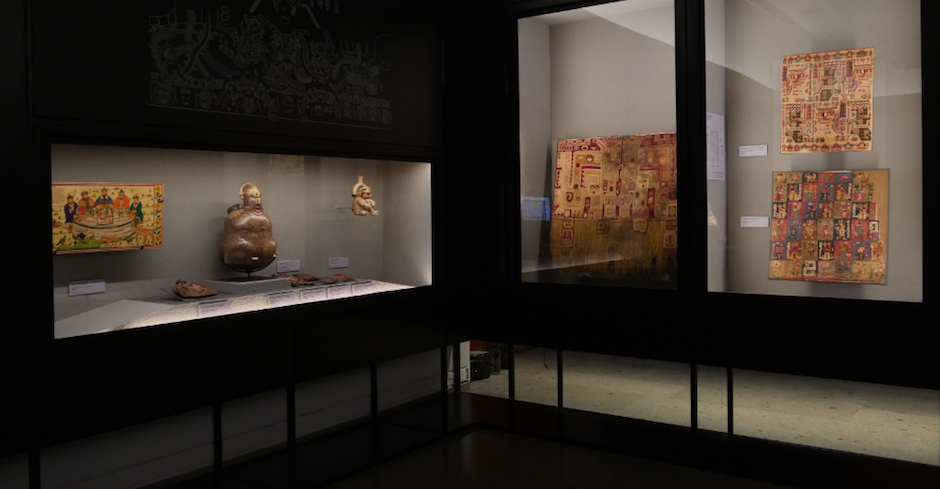
'The beings of the world' section.
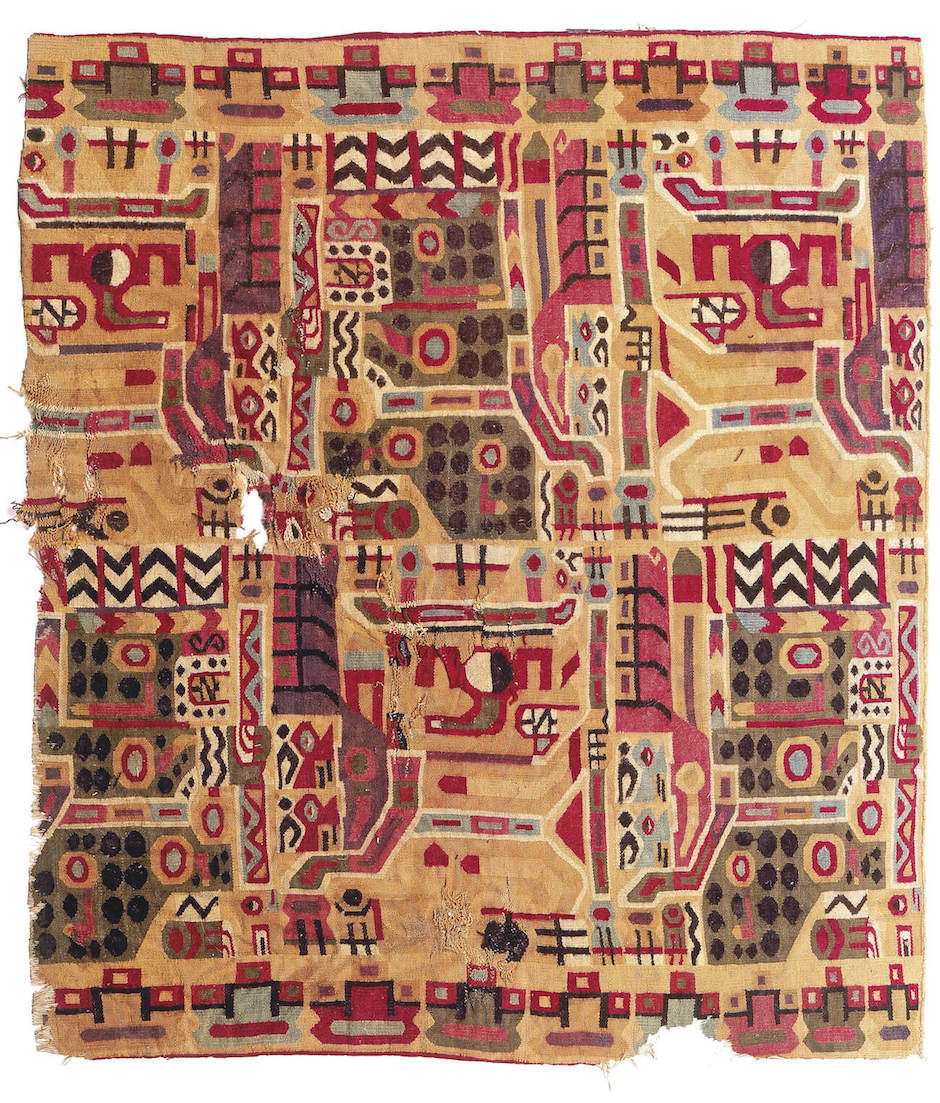
Being with human, feline and bird attributes holding staffs. Fragment of a tunic (unku), textile. Wari-Tiwanaku, south-central coast of Peru, AD 550-950. Colección Museo Chileno de Arte Precolombino, 3431.

Winged felines, accompanied by birds and fish. Tunic (unku), textile . Wari, costa sur del Perú, 550-950 d.C.
Colección Museo Chileno de Arte Precolombino, 0940.

'The beings of the world' showcase.
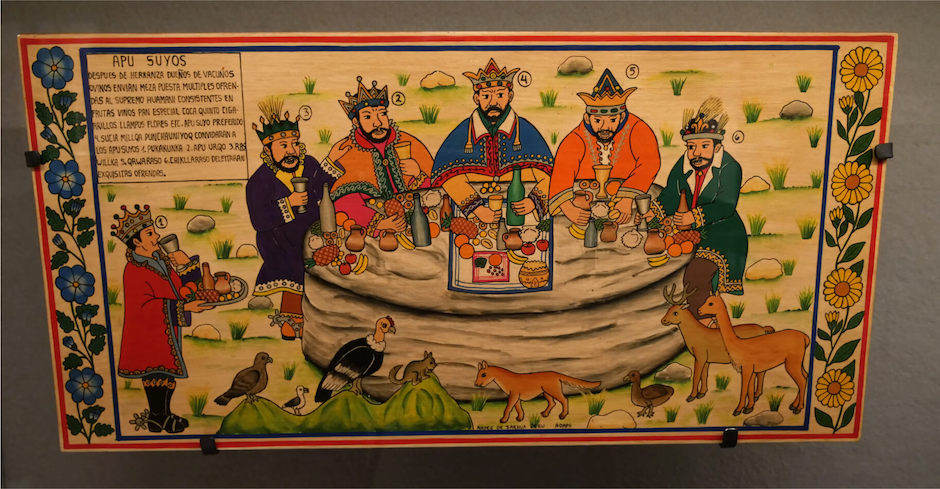
Apus Suyo, the Hills-Men. Sarhua tableau, wood. Ayacucho, Perú
(present day). Colección particular, LEN-1.
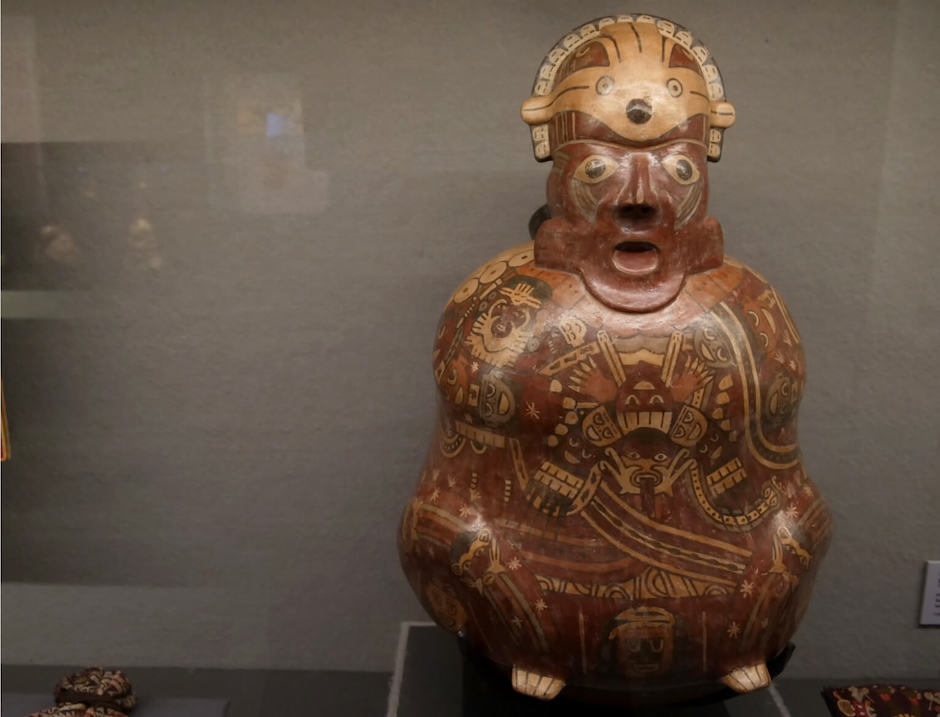
Human being accompanied by serpents, monkeys, birds and plants. / Jug, ceramic. Nasca, costa sur del Perú, 100-300 d.C. Colección particular, PE-SAL 01.

Drawing of Nasca jug ceramic.

At the center of the bag is a being with human and animal attributes. Bag (wayaja), textile. Arica (Fase San Miguel), norte de Chile
1000-1300 d.C.
Colección Museo Chileno de Arte Precolombino /DSCY 1489.

Half-human, half-animal being. Ceramic bottle. Moche, costa centro norte del Perú
1-700 d.C. /Colección Museo Chileno de Arte Precolombino, 3101.
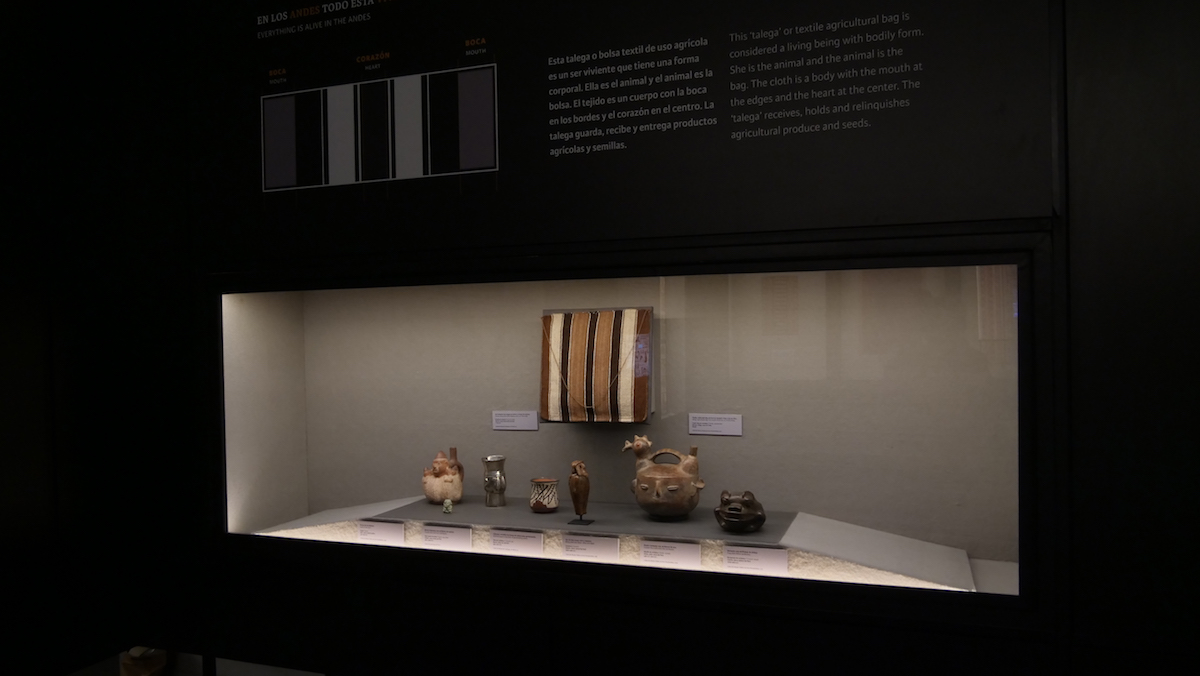
'The beings of the world' showcase.
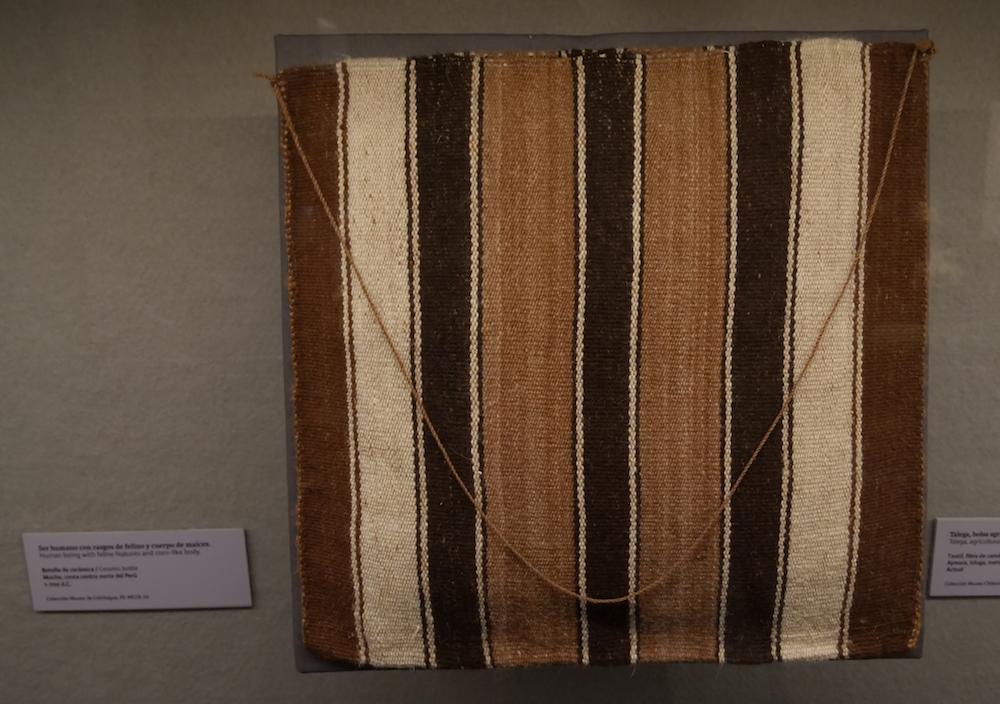
Talega, agricultural bag. The opening looks like the mouth of a living being. Textile
Aymara, Isluga, norte de Chile (present day). Colección Museo Chileno de Arte Precolombino, 2252.
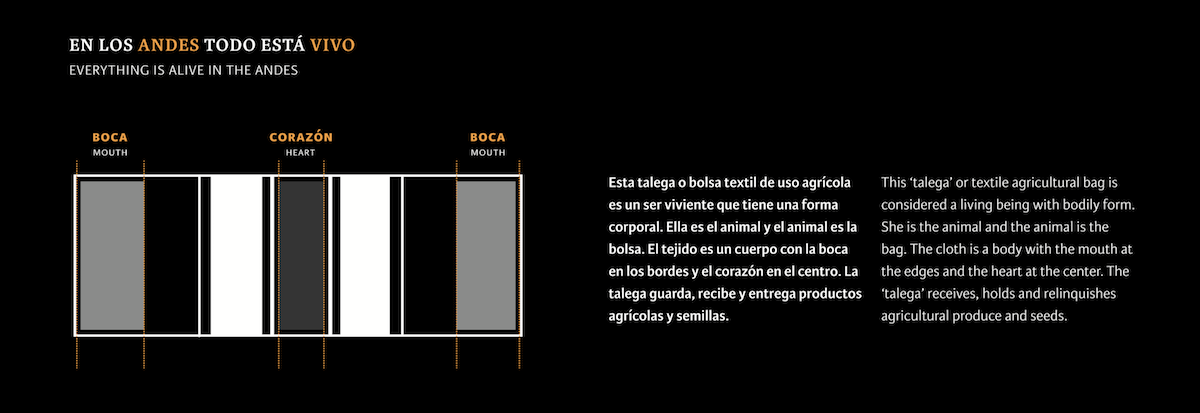
Everythings is alive in the Andes.
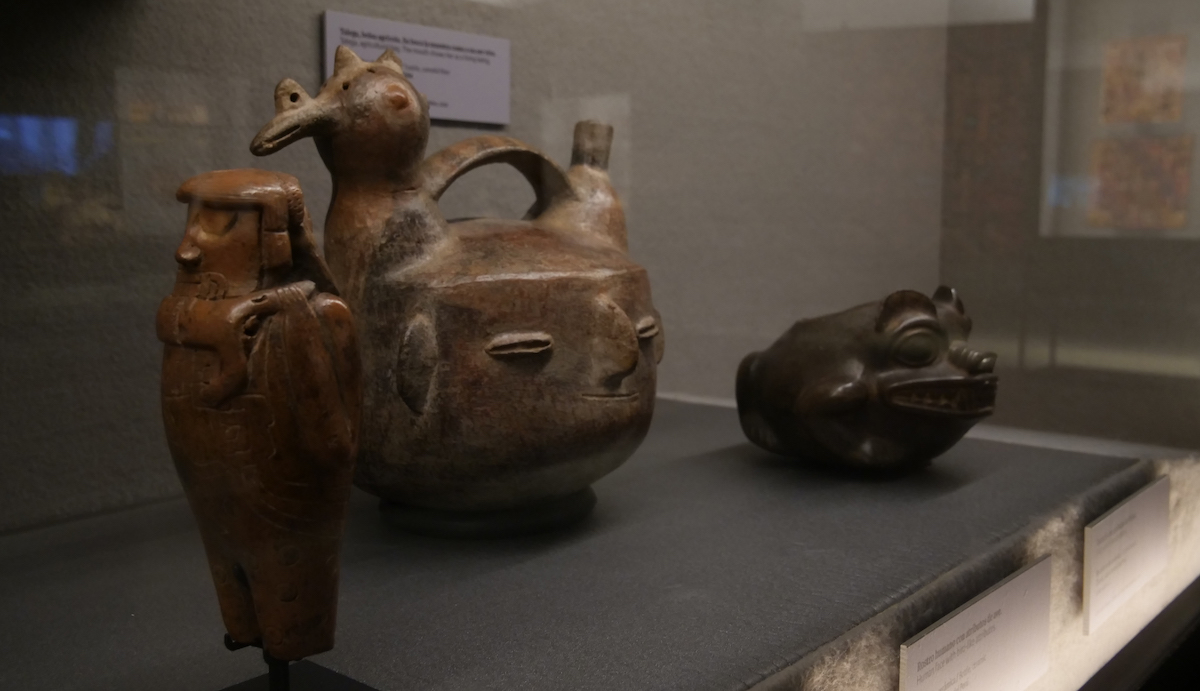
(1). Being with two faces - alive and dead. Ceramic. Chavín, sierra centro norte del Perú, 900-400 d.C. Colección Museo Chileno de Arte Precolombino, 0185. (2) Human face with bird-like attributes. Ceramic bottle. Vicús, costa norte del Perú
400 a.C.-500 d.C. Colección Museo Chileno de Arte Precolombino, 0230.
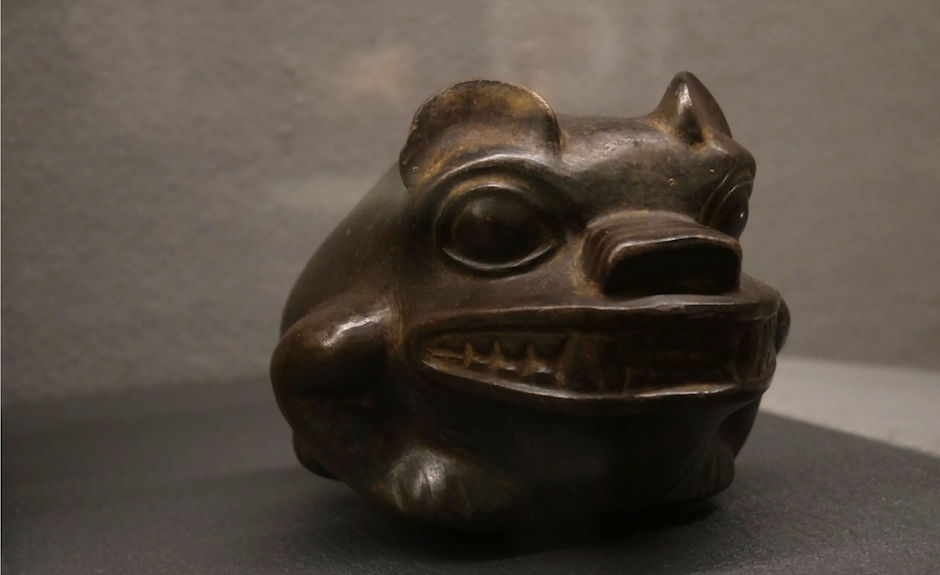
Frog with feline attributes. Ceramic vessel. Chavín, sierra central del Perú
1000- 400 a.C. Colección Museo Chileno de Arte Precolombino, 2112.

Severed head in the form of germinating tubers. Ceramic cup
Nasca, costa sur del Perú, 400-700 d.C.
Colección Museo Colchagua, PE-MCOL 02.
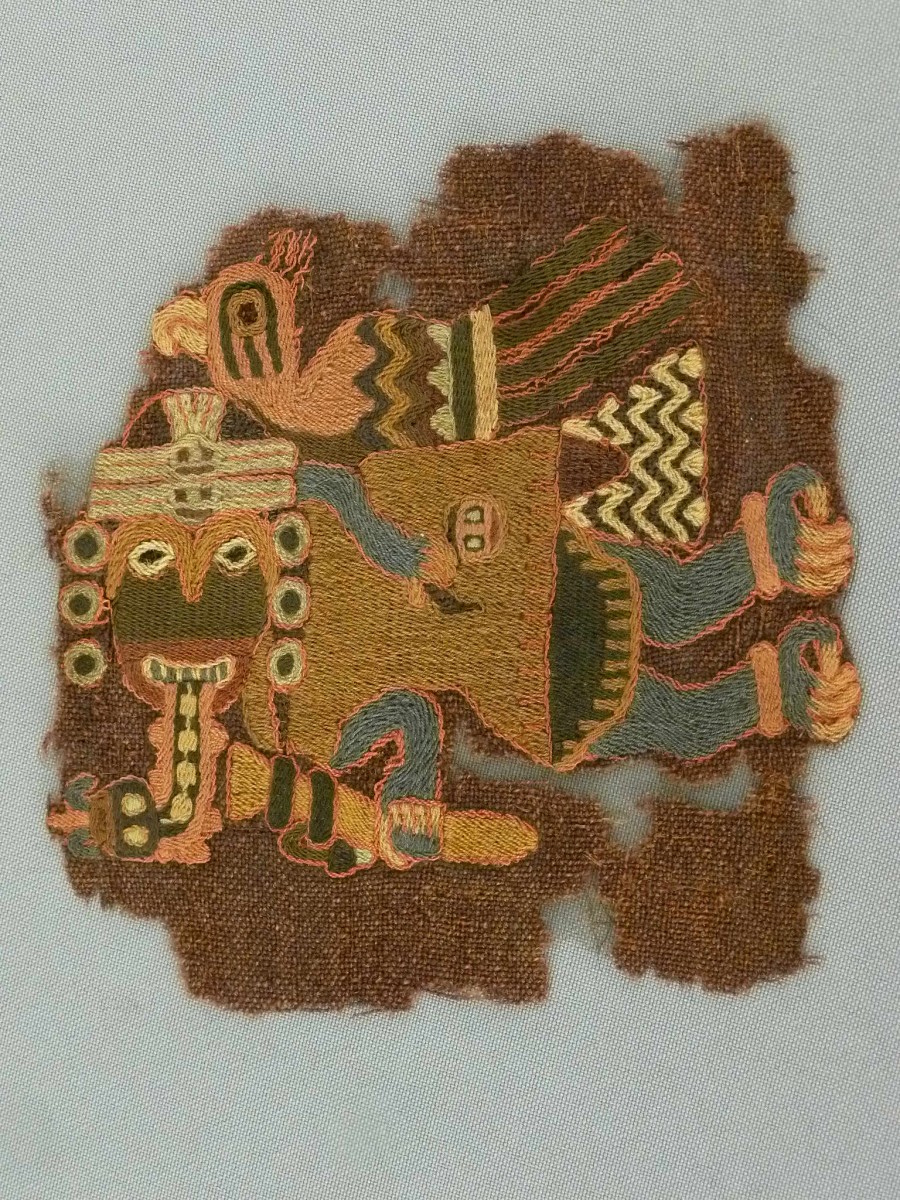
Human being with bird and monkey attributes holding a severed head. Embroidered textile fragment.
Paracas Necrópolis, costa sur del Perú , 100 a.C.-200 d.C. Colección Museo Chileno de Arte Precolombino, 0521.

Virgin of Stone. Reproduction from an original. Sucre, Bolivia
(present day). Colección Museo Chileno de Arte Precolombino.
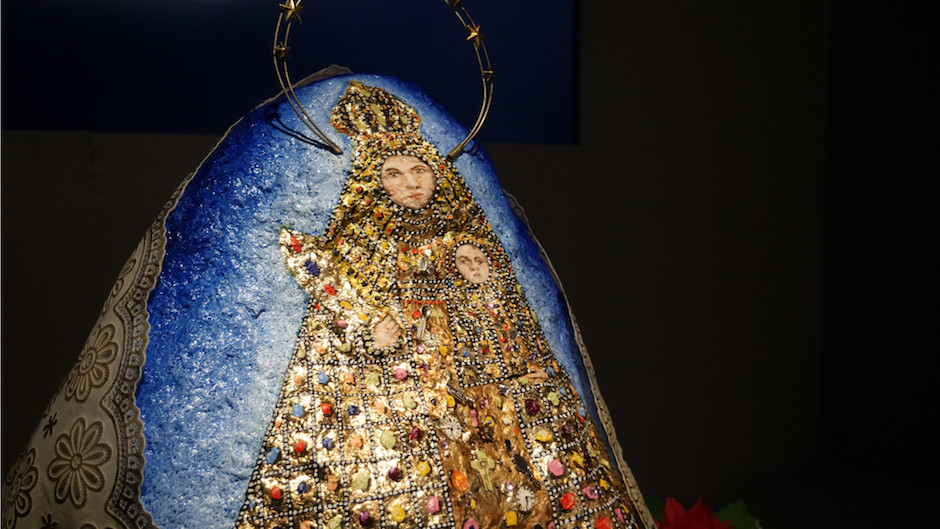
Virgin of stone (Detail).
Unlike Western conceptions, in which the world is divided into the animal, vegetable and mineral realms, in the Andes, birds, camelids, felines, humans, monkeys, the dead, supernatural beings, plants and minerals all are part of the same realm. Each has a body and its own life force, energy, head, mouth, heart, feet, hands and ways of feeling, thinking and organizing their societies. Both human and non-human beings live in a fluid world of constant transformation. That is the world of rocks, which are seen as virgins, of anthropomorphic beings with feline features, of corn and of potatoes, which are not only transformed into ‘chuño’ (dehydrated potatoes), but are also humanized germinating tubers.
























































